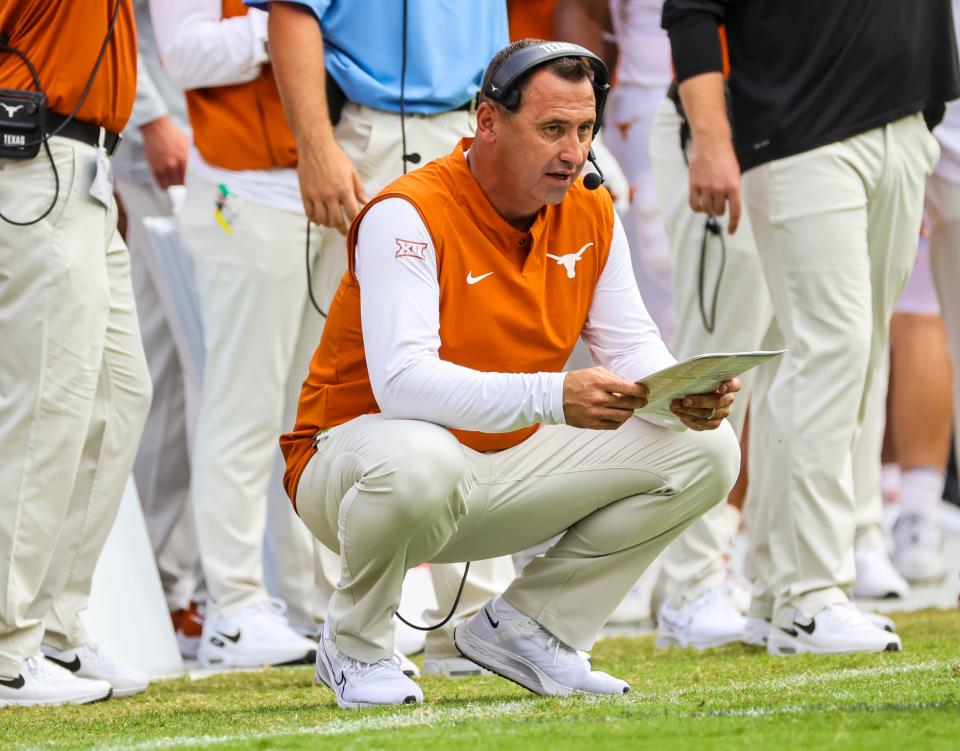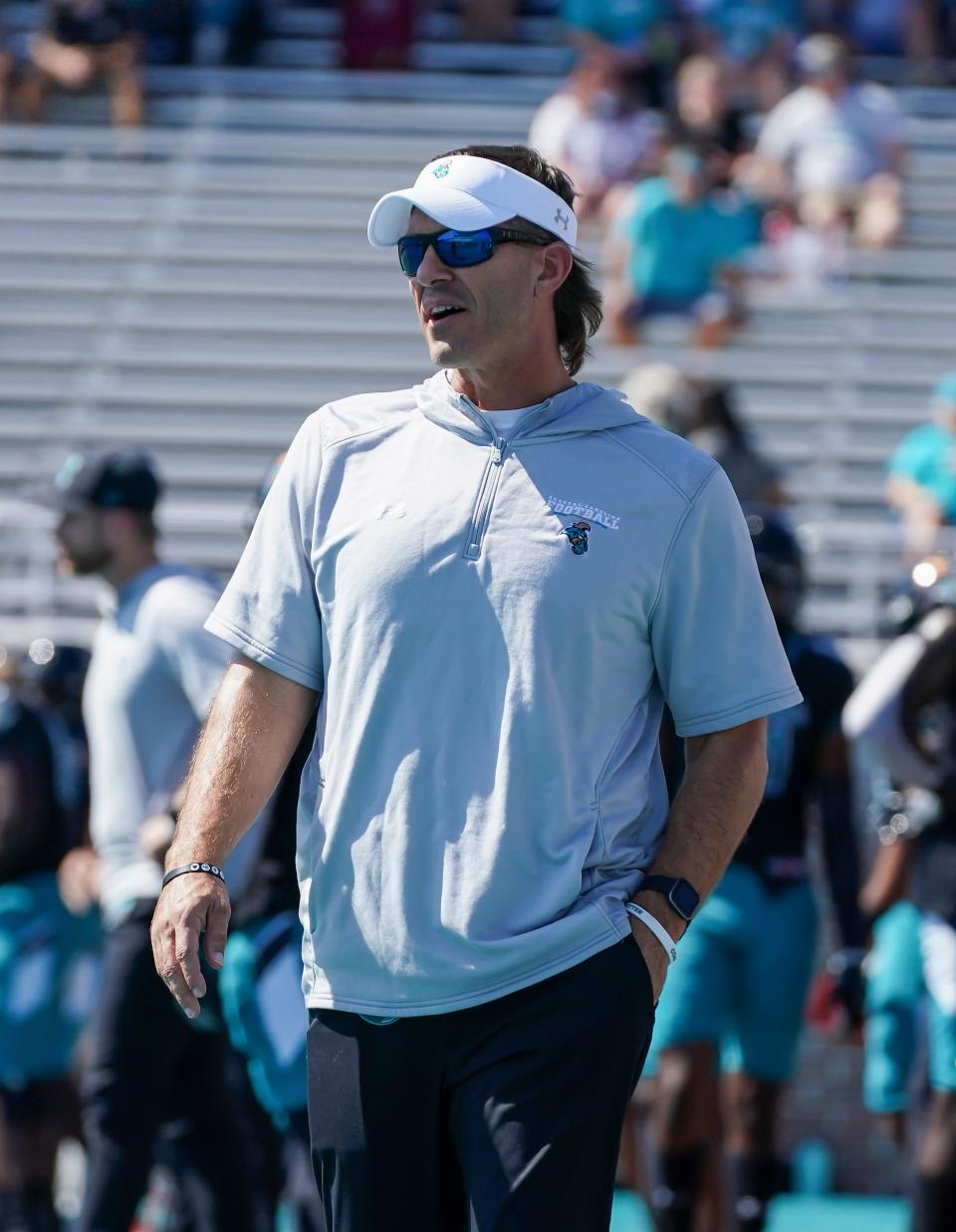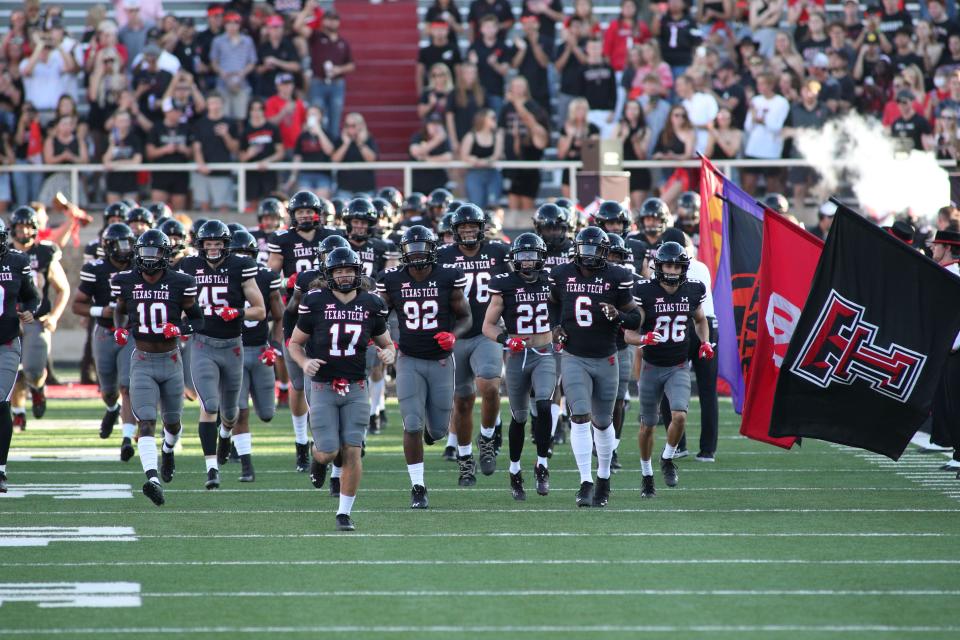What pandemic? These college football coaches cashed in big despite schools’ COVID-19 cutbacks

In January 2020, the University of Texas athletics department hired a new employee to help the Longhorns do what they’ve done best in college sports – make more money.
His name is Grady Millikan, a data analyst whose job paid him $65,000 annually to maximize Longhorn revenue streams including ticket sales and donations. It was a “dream job,” he said, noting he had turned down other job offers with better pay to take it.
But then came the pandemic and an e-mail instructing him to attend a mandatory Zoom meeting on Sept. 1, 2020. That’s when Texas rounded up Millikan and 34 other relatively inexpensive staff workers to tell them they were being laid off to help save $13.1 million in costs and stabilize the department financially, according to Texas athletics director Chris Del Conte.

“It was definitely kind of a shock,” Millikan told USA TODAY Sports.
That’s because this is the same Texas athletics department that ranked first nationally with $224 million in athletics revenue in 2018-19. It’s also the same Texas athletics department that apparently found enough spare coins underneath its seat cushions four months later to fire football coach Tom Herman and his staff after they finished the season in December with a 7-3 record.
The projected cost to buy out those coaches’ contracts and get rid of them was nearly $25 million. The Longhorns then hired a new head coach in January – Steve Sarkisian – and gave him the most lucrative initial contract in school history at $34.2 million for six years.
So were they really hurting for cash last year after all? Or did they actually have cash to burn?
In the alternate financial reality of college sports, it apparently was both.
Shortened seasons and limited ticket sales last year forced many to plead poverty and cut costs amid COVID-19, including layoffs and eliminating sports. At the same time, the money train for football coaches kept accelerating at many schools. In 2019, the last season before the pandemic, 16 coaches made at least $5 million in guaranteed annual pay, up from three in 2013. This year, 21 will make that much, including at least seven coaches who got richer new contract terms during the pandemic, according to the latest annual head coaches’ compensation survey by USA TODAY Sports.
In other words, it was business as usual at these places despite the cutbacks or maybe even because of them – paid for with the help of donations, cost savings, reserves, loans and even some federal COVID relief funds.
From a business standpoint, it might seem like a no-brainer for them to keep pumping money into football, the primary revenue driver of athletics departments. But doing so against the backdrop of COVID cutbacks created a “bewildering” dissonance between “spending as usual” and “poormouthing and penny-pinching” since the start of the pandemic, said Brian Goff, economics professor at Western Kentucky.

See salaries for college football coaches through the years
Goff says it’s because of the “crazy, mixed-up world of college sports accounting and its not-for-profit structure,” whose mission is not to maximize profits like a business. As nonprofit operations, athletics departments instead generally spend what they take in and often more.
“In essence, the job of the AD is to find ways to spend money in good times and then to cut back in hard times,” said Roger Noll, a sports economist at Stanford, who testified for the plaintiffs in the Ed O'Bannon antitrust case against the NCAA. In these cases, they are spending more on coaches’ pay based on projected good times in the long-term for football while also cutting expenses to solve dire short-term budget deficits that they hoped would be temporary.
The contrast of this during the pandemic still could appear callously incongruous. Here is how it played out at several schools:
AT TEXAS
Being bigger wasn’t better anymore for the athletics department last year in Austin.
To prepare the staff for those cutbacks last year, Texas indicated it had gotten too big with 390 employees in a department that had 556 student-athletes, according to an analysis the Texas athletics department showed employees during a meeting before the layoffs. The analysis, which was obtained by USA TODAY Sports, compared Texas’ staff size to the staff size of Texas A&M, which listed fewer employees (330) but more student-athletes (638).

It was an unusual message coming from Texas, seemingly suggesting it needed to do more with less and compete with A&M, its longtime rival, by getting smaller. Texas then made 35 layoffs, cutting the jobs of staff in ticket sales, administrative support, media relations and other areas earning five- or low six-figure incomes.
No coaches got laid off, but Del Conte said 35 additional vacant positions would be “permanently eliminated,” along with pay cuts for about 300 more including coaches. Del Conte estimated the total estimated savings from these payroll reductions was $13.1 million, victim of a projected budget shortfall of more than $50 million.
GIG 'EM?: Texas’ athletics department did something no one saw coming. It tried to emulate Texas A&M
BAD DEALS: Five worst deals among college football coaches contracts
EXPLOSION: The astronomical rise of pay in college football coaching
Millikan said he’s glad no sports were eliminated at Texas instead and is not angry about being laid off. He even ended up with a better paying job a few months later. At the same time, he’s still disappointed about what happened just months before Texas committed to record sums in football coaches’ compensation.

“The salaries of the employees (who were laid off) are really a drop in the bucket based on what they are paying former coaches and current coaches, especially when they are not paying those people to coach anymore,” Millikan said.
But he said he understands football revenue helps fund the rest the rest of the department, like it does at other schools. He said that eliminating support staff jobs like his probably was the most convenient solution for Texas to meet its short-term budget reality.
Or there’s another way to look at it.
“You save a few thousand dollars on some staff positions and then you blow millions of dollars on a coach (Herman) who doesn’t seem to be any different than the coach you are spending even more money on (Sarkisian),” said David Berri, an economics professor at Southern Utah.
Texas made this expensive coaching change at an uncertain time. It was before widespread vaccine availability earlier this year helped ensure that college football returned to more normal revenues this fall with full stadiums and full schedules.
Asked if any of the eliminated jobs were restored, or what the staffing level is now, Texas athletics spokesman John Bianco he didn’t have data to share. He said Del Conte declined to talk about it. Sarkisian this year is 4-2, same as Herman was in his first six games last year.

AT CINCINNATI
The Bearcats made three major moves last year in a span of five months: They eliminated their men’s soccer program, gave their football coach a big pay increase and then announced the elimination of 15% of its athletics department staff jobs.
The men’s soccer program wasn’t that expensive: It only had about $908,000 in operating expenses in fiscal 2019, compared to $69 million in revenue for Cincinnati athletics, according to a financial report obtained by USA TODAY Sports in partnership with Syracuse University’s S.I. Newhouse School of Public Communications. Athletics director John Cunningham still said it was necessary after reviewing the “long-term budget implications.”
In August 2020, the university’s board of trustees then approved a pay increase and contract extension for football coach Luke Fickell, who had interviewed earlier that year for the top job at Michigan State. The deal increased his pay from $2.3 million in 2019 to $3.4 million in 2020 and would be funded through private donations, according to Cunningham.

Less than two weeks after that, the university announced that it was eliminating 14 full-time positions in athletics, half of which were then vacant.
Cincinnati declined a request to interview Cunningham and didn’t respond to inquiries about whether any of those positions were restored. The Bearcats are 5-0 this year and ranked in the Top 5.
Berri said it’s a classic case of school boosters caring about football and not much else – and then having the ear of school decision-makers.
“Nobody goes to the president and the athletic director about soccer,” he said. “They don’t hear from those people. They’re hearing from football boosters.”
AT TEXAS A&M
The Aggies announced on Sept. 1 that they were giving football coach Jimbo Fisher a contract extension and pay raise from $7.5 million to $9 million in 2022 even though there wasn’t any apparent outside bidding for his services at the time. Athletics director Ross Bjork said the new contract was critical to provide “the appropriate amount of stability and continuity during this important time.”
Yet just a few months earlier, in May, Bjork bemoaned a $48 million budget shortfall in athletics, including $17 million in expense reductions, though not any pay cuts or layoffs.

Such poverty pleas sometimes help drum up support. In December, the athletics department’s fundraising arm sent this message to donors:
“By hosting a reduced number of home football games at 25 percent capacity this season, Texas A&M Athletics and the 12th Man Foundation are at risk of suffering losses in excess of $40 million,” which was about 25% of the department’s normal budget, the message said. “With your financial support, we can navigate the present circumstances.”
Asked how A&M could afford the pay increase for Fisher, athletics spokesman Alan Cannon replied that the athletics department “receives funding from ticket sales, donations and radio/TV contracts.” He said A&M athletics does not receive any state funding nor any university fees.
A&M and other member schools also got some help from the Southeastern Conference, which effectively loaned them each a $23 million advance based on future increases in league media rights revenues. Two financial companies, Truist Securities and Regions Capital Markets, helped arrange the funding to help offset an average per-school revenue shortfall of $45 million.
A&M is 4-2 this season after beating No. 1 Alabama Saturday, 41-38.
“We see the penny-pinching around the edges on stuff that seems less critical to long-run performance,” said Goff, author of "Sports Economics Uncut." “If these programs viewed the revenue reductions as permanent, then we would see cuts in these other areas also. But given that it is viewed as a temporary shock to revenue, these mission-critical items get insulated and less-critical items are used to smooth out the revenue shock.”
AT COASTAL CAROLINA

Chanticleers athletics director Matt Hogue told USA TODAY sports that his department had to cut about 15% of its budget year for the fall of 2020, which amounted to about $4 million, including layoffs of assistant coaches in non-revenue sports. Football coach Jamey Chadwell also took a scheduled pay cut of about $56,000 from his $375,000 annual pay.
But then in December, the school gave him a contract extension that doubled his pay to $850,000 this year after finishing 11-1 last year. Hogue said it was a “strategic decision” for the university, separate from the budget cuts.
“Yes, it was happening within a climate that was still maybe somewhat unsure,” Hogue said. “But we had to act at that time because obviously the calendar of coaching replacements and so forth would have not allowed us to have waited.”
He said most of the jobs that were cut last year were restored this year and that the financial outlook had improved by the time of Chadwell’s pay raise. He said the football success increased the school’s exposure, aiding efforts to pull in the largest freshman class in CCU’s history this fall with over 2,500 students.
CCU is 6-0 this year and ranked No. 15 in the USA TODAY Sports AFCA coaches poll.
AT TEXAS TECH
The Red Raiders announced on Aug. 31, 2020, that they were eliminating 40 positions and reducing salaries, a strategy designed to save $4.49 million over the next year.
Those who took pay cuts included the head football coach, as was the case at many schools, even though such cuts generally were temporary. In this case, coach Matt Wells had been scheduled to have 12.7% cut from his $3 million annual pay, or about $390,000 for the full year. But it was soon business as usual for him. In March, the university sent him a letter that said it was restoring his full pay effective March 1, six months earlier than anticipated.
“We appreciate your willingness to make this sacrifice,” said the letter obtained by USA TODAY Sports.

It helped that the athletics department got $2 million in federal COVID-19 relief funds in May to replace revenue from student fees that were waived the previous fall, according to a document obtained by USA TODAY Sports. That went into the department’s general revenue. Other athletics departments used such federal relief funds for COVID testing, as Tech also did with another $1.2 million.
Tech didn’t respond to inquiries about whether eliminated positions were restored.
SOME DID CUT
Not everybody acted like it was business as usual.
In May, Washington State faced a $31 million budget shortfall and got approval to sell up to $35.6 million in bonds to bring in relief – debt to be paid off within 20 years using Pac-12 conference revenues. WSU previously announced in September 2020 that 10 positions were being eliminated and that coaches had agreed to pay cuts, including 15% for football coach Nick Rolovich, who was scheduled to make $3 million.
At Florida State, coach Mike Norvell agreed to take a 25% cut on his $4 million pay in July 2020, when FSU also announced other cuts including the elimination of 25 staff jobs.
Norvell and other head coaches who took pay cuts generally did so voluntarily because they previously made binding multi-year contracts with their schools to be paid a certain amount on schedule. By contrast, most athletics department staff aren’t under binding multi-year contracts.
“Most athletics department employees are at-will employees and thus easier to furlough, impose temporary pay cuts on them, etc.,” said Joshua Lens, an assistant professor at Arkansas and former NCAA compliance director at Baylor.
At Michigan, coach Jim Harbaugh had been scheduled to make more than $8 million in scheduled pay last year but agreed to a contract extension in January that only pays him about half that, not counting possible bonuses. The deal came after a disappointing run under Harbaugh, including a 0-5 record against rival Ohio State and a 2-4 season in 2020. Michigan also cut 21 administrative staff jobs and elected not to fill 15 vacancies last year. In June, Michigan projected to finish its fiscal year with a $63 million operating deficit. This season, Michigan is 6-0 and ranked in the Top 10.
Berri suspects Harbaugh’s pay reduction had nothing to do with the pandemic.
“If Jim Harbaugh were beating Ohio State, they would have given him a raise,” Berri said.
Follow reporter Brent Schrotenboer @Schrotenboer. E-mail: bschrotenb@usatoday.com
This article originally appeared on USA TODAY: College football coaches’ salaries exploded despite COVID cutbacks

